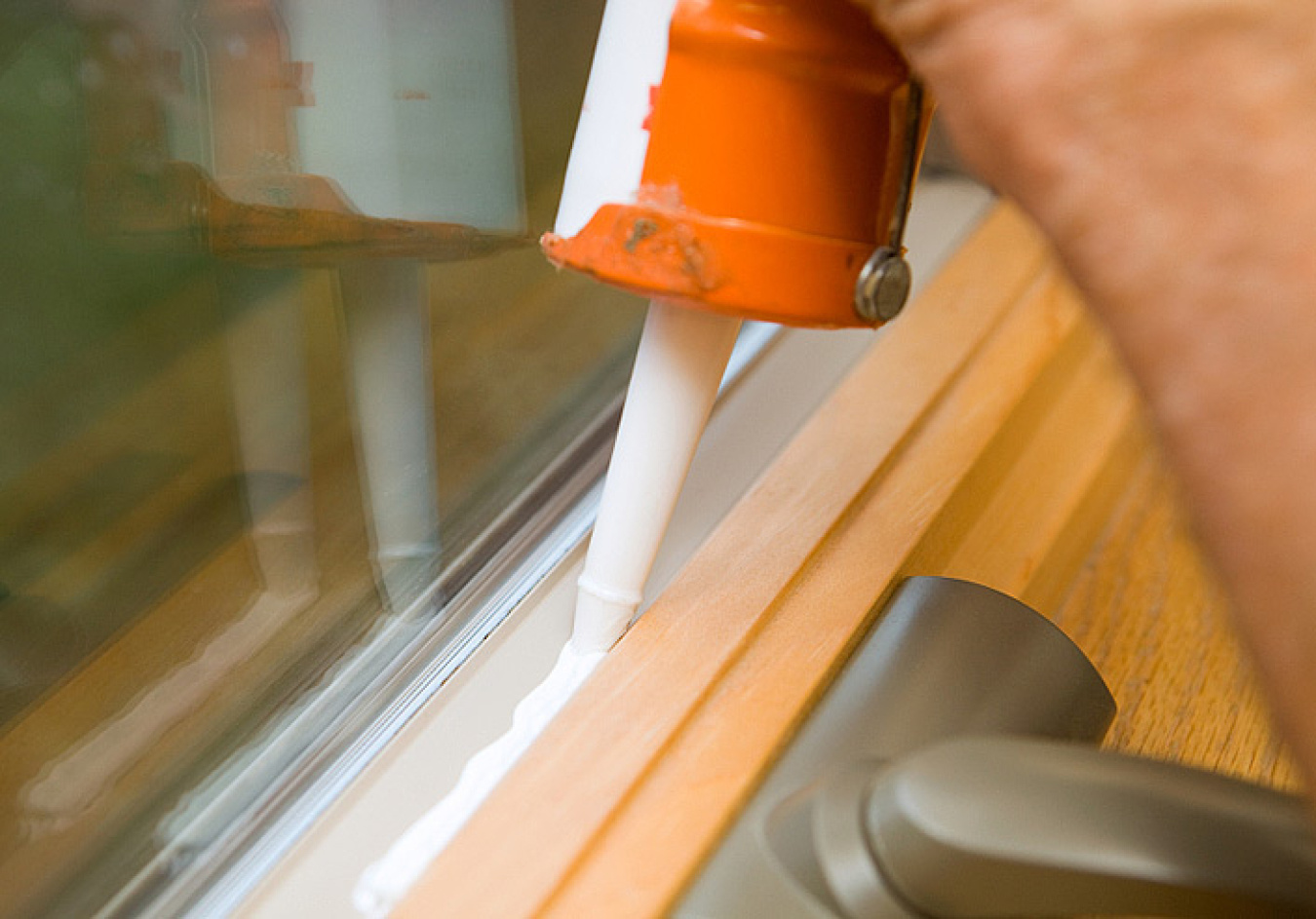Caulk
Caulk is a flexible material used to seal air leaks through cracks, gaps, or joints less than 1-quarter-inch wide between stationary building components and materials. For components that move — doors and operable windows, for example — weatherstripping is the appropriate material.
Before caulking air leaks in an existing home, you will need to detect the leaks and assess your ventilation needs to ensure adequate indoor air quality. In addition to sealing air leaks, caulking can also prevent water damage inside and outside of the home when applied around faucets, ceiling fixtures, water pipes, drains, bathtubs, and other plumbing fixtures.

Applying caulk to a window frame to prevent air leakage. This caulk is white when applied and dries clear.
Selecting Caulking
Most caulking compounds come in disposable cartridges that fit in half-barrel caulking guns (if possible, purchase one with an automatic release). Some pressurized cartridges do not require caulking guns.
When deciding how much caulking to purchase, consider that you’ll probably need a half-cartridge per window or door and four cartridges for the foundation sill of an average home. Caulking compounds can also be found in aerosol cans, squeeze tubes, and ropes for small jobs or special applications.
Caulking compounds vary in strength, properties, and prices. Water-based caulk can be cleaned with water, while solvent-based compounds require a solvent for cleanup.
Applying Caulk
Although not a high-tech operation, caulking can be tricky. Read and follow the instructions on the compound cartridge, and remember these tips:
- For good adhesion, clean all areas to be caulked. Remove any old caulk and paint, using a putty knife, large screwdriver, stiff brush, or special solvent. Make sure the area is dry, so you don’t seal in moisture.
- Apply caulk to all joints in a window frame and the joint between the frame and the wall.
- Hold the gun at a consistent angle. Forty-five degrees is best for getting deep into the crack. You know you’ve got the right angle when the caulk is immediately forced into the crack as it comes out of the tube.
- Caulk in one straight continuous stream, if possible. Avoid stops and starts.
- Send caulk to the bottom of an opening to avoid bubbles.
- Make sure the caulk sticks to both sides of a crack or seam.
- Release the trigger before pulling the gun away to avoid applying too much caulking compound. A caulking gun with an automatic release makes this much easier.
- If caulk oozes out of a crack, use a putty knife to push it back in.
- Don’t skimp. If the caulk shrinks, reapply it to form a smooth bead that will seal the crack completely.
The best time to apply caulk is during dry weather when the outdoor temperature is above 45°F (7.2°C). Low humidity is important during application to prevent cracks from swelling with moisture. Warm temperatures are also necessary so the caulk will set properly and adhere to the surfaces.


Recent Comments